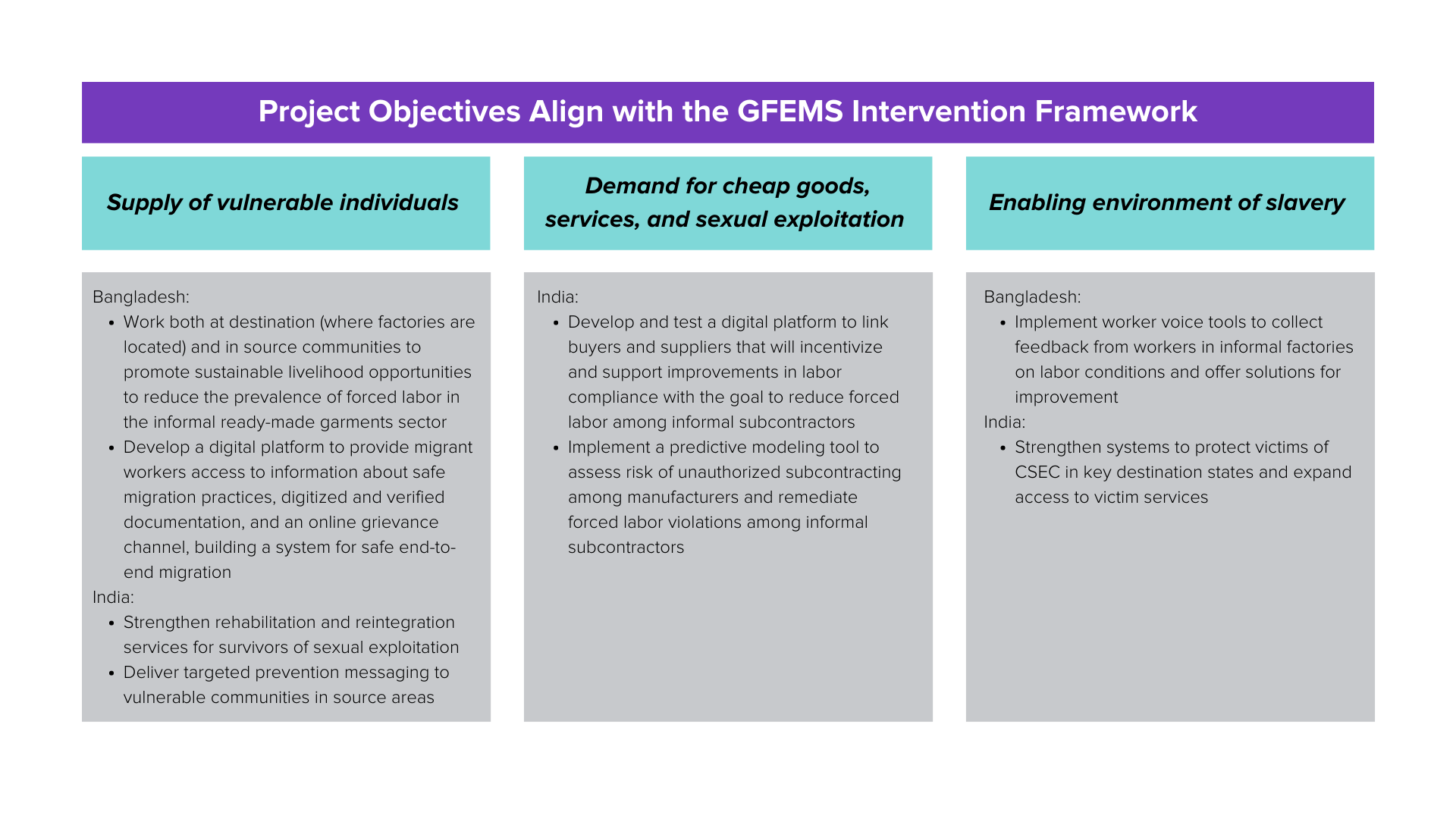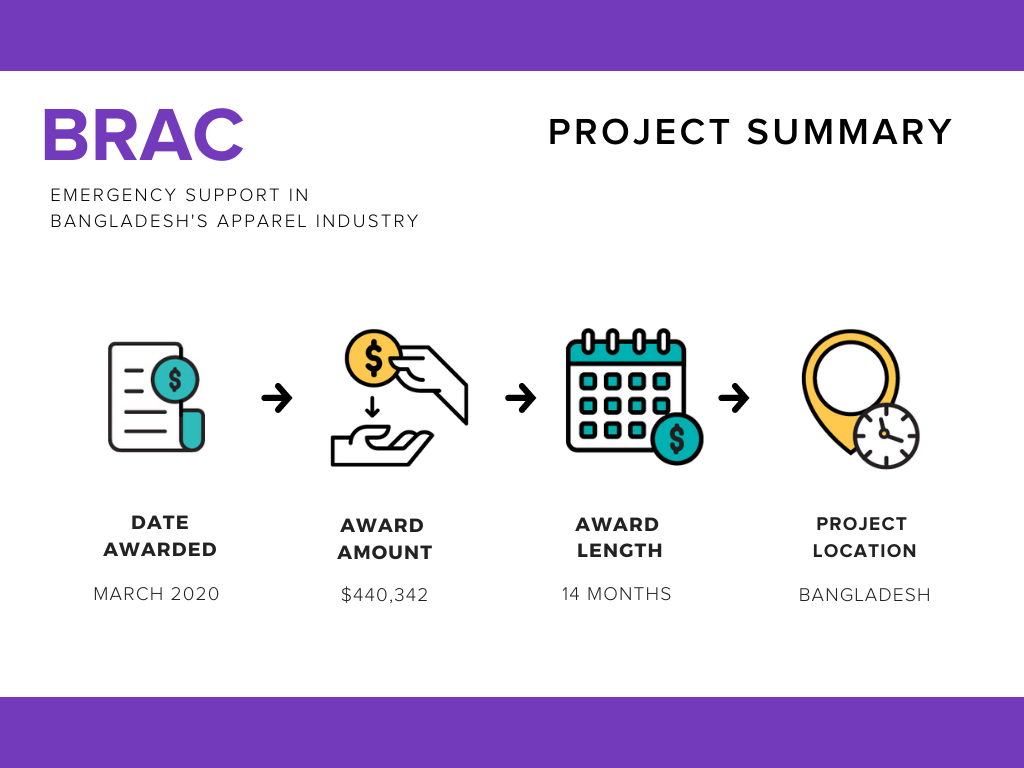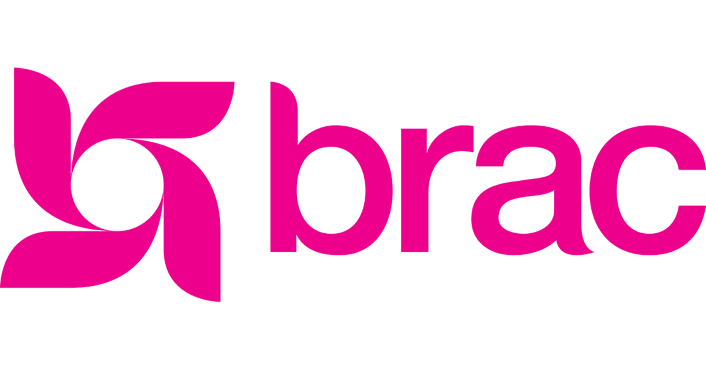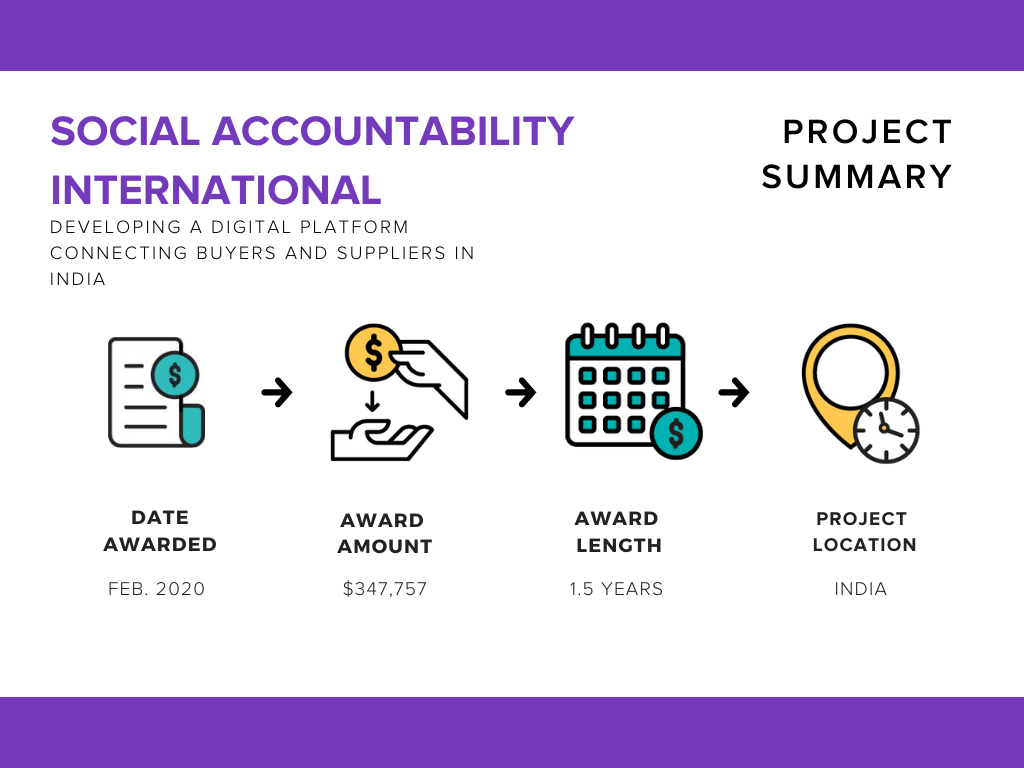Tamil Nadu is India’s biggest textile hub, known particularly for its yarn manufacturing capabilities. The southern state generates more employment in the spinning industry than any other state in India. Mill workers in Tamil Nadu, however, are highly vulnerable to forced labour conditions.
To build the business case for fair labour conditions in the apparel sector, GFEMS commissioned Wazir Services to investigate conditions of forced labour in spinning mills in the Indian state of Tamil Nadu. The results of this research, investigation into existing and ongoing efforts for improvement within mills, and analysis of the financial impact of a concrete set of improvements in labour conditions are shaping the Fund’s intervention strategies in India’s apparel sector under its partnership with the UK Foreign, Commonwealth, and Development Office (FCDO).
Labor and Production Challenges in Tamil Nadu’s Textile Sector
Workers in Tamil Nadu’s spinning industry face challenges including but not limited to: sexual harassment, high workload, lack of standard welfare or human resource policies, harsh working conditions, and non-payment of wages due to an undefined wage structure and loopholes in legislation. Within the last decade, the state has experienced an influx of vulnerable migrant workers from other states within India, reaching levels as high as 50% of the total workforce.
Despite high levels of migration, however, migrant workers increasingly look for work in the service industry, or other less strenuous jobs, where they feel they are more relaxed and compensated better.
As a result, mills are experiencing a labour shortage.
To offset this labour shortage, and in contrast to other states in India, Tamil Nadu also exercises longer working hours, usually 12 hour shifts This is the primary reason for high labour attrition and absenteeism in mills. The annual average attrition levels in the industry are as high as 20%.
As a result of the labour shortages, mill workers experience increased pressure to produce the same amount of yarn with a smaller labour force. This pressure adversely affects the quality of the product and/or overall productivity, which in turn negatively affects sales and further exacerbates financial strain on mills. The average utilization level of a spinning mill in Tamil Nadu was reported at 79%, over 15% lower than the utilization level of the average Indian mill at 95%.
What We Learned
Wazir’s research suggested there is a business case demonstrating long term profitability of fair labour practices that could incentivize mill owners and managers to improve conditions.

In short, labour condition improvement initiatives both reduced prevalence of forced labour conditions for workers and increased performance and profitability of the mill.
Due to existing NGO initiatives raising awareness around labour rights, owners and managers at medium and large mills are open to labour conditions improvements. Changing their operational and managerial practices with regards to labour conditions can make them more compliant, more attractive to brands, and more profitable. Wazir identified 6 key initiatives currently being implemented in a number of mills across Tamil Nadu as drivers of reduced prevalence of forced labour:
In mills that implemented labour conditions improvement initiatives, Wazir identified two main drivers of increased performance and profitability:
- Low Attrition & Absenteeism. Low attrition and absenteeism result in higher utilization, further resulting in higher production and sales.
- Workers’ Morale & Concentration Levels. Healthy and satisfied workers perform better, are more productive, and produce higher quality products.Fixed working hours, a safe working environment, and fair wages can ensure that workers’ morale and performance level is high.
In short, labour condition improvement initiatives both reduced prevalence of forced labour conditions for workers and increased performance and profitability of the mill.
Wazir’s research also found that good labour practices had considerable positive impact on operational performance parameters such as productivity, utilization, quality, and yarn realization. This improvement in operations not only drives higher production and sales, but also reduces the manufacturing costs, in turn leading to higher margins.
GFEMS is enthusiastic that this research is a first step towards building a comprehensive business case for improvements in labour conditions in spinning mills. Achievement of a comprehensive business case requires and can be used to continued engagement with spinning mills, industry associations, and the government about good labour practices and potential win-win solutions. By identifying the structure of labour trends and the key drivers of forced labour within mills, as well as better business practices showing positive results, this research has paved the way for future GFEMS interventions in this subsector.
To learn more about our findings and the textile sector in Tamil Nadu, download the briefing.










